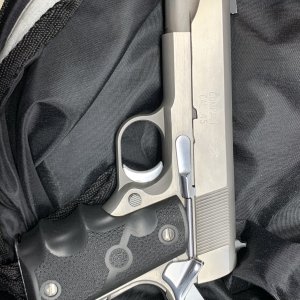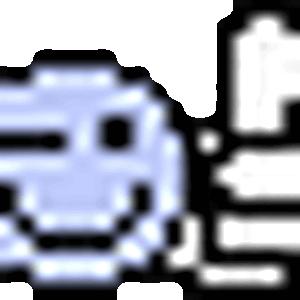Rockon71385
Founding Member
This post is intended to be a super-simple and to the point introduction to dry fire training for new shooters who want to improve
Why Dry Fire?
The single biggest factor that determines which shooters improve their skills and which ones don't is time spent training. If you train, you will improve. If you train deliberately and efficiently, you will improve faster. Since ammo is expensive and mastering gun handling skills requires thousands of repetitions, dry fire training is the most cost effective way to train basic gun handling and movement skills. The vast majority of high level shooters, including almost all of the pros, will tell you that they spend more time doing dry fire than live fire. Dry fire training is easy, effective, and essentially free. You may or may not find dry fire practice to be fun or interesting. It bores the hell out of some people. That's ok, it's not supposed to be fun. The fun part comes later when you shoot better than you ever have before and you get to look at the results and find lots of the people who normally beat you down below your name somewhere on the list.
What is Dry Fire?
Dry fire training is the practice of improving speed, efficiency, and consistency in your shooting skills by doing repetitive drills with no ammo. There are lots of different skills you can work on, and drills you can use. I'll talk more about that later, and several links for good resources can be found in this thread.
How to Dry Fire
Any dry fire is better than none, but the most efficient way to spend your dry fire time is to make use of par times. For any kind of dry fire, constantly stay aware of your technique and try to make yourself do things the right way. The quality of every repetition is just as important as the time it takes you to complete it. Also, practice makes permanent, so it will definitely pay off to get some quality instruction before you dive into dry fire. Doing thousands of reps with bad technique can make for a lot of bad habits that take years of work to unlearn.
How to find Par Times
You'll need a shot timer or one of the many free shot timer apps. Any shot timer and most of the apps will allow you to set up the timer in par time mode, which makes it beep once to start the timer, and then beep again once the preset par time has expired. Be sure to set the initial beep to random delay, so you can start yourself by pushing the button and waiting for the start beep. Press the start button, wait for the beep, then try to complete your drill in the time between the start and stop beeps. It's that simple. This process allows you to see how fast you can complete a drill without having to fire a shot. It's important to be honest with yourself when you're deciding whether or not you beat the buzzer. If your dry fire times start to become way out of wack compared to the times you can do in live fire, you're probably not holding yourself accountable in dry fire.
Next, you're going to choose some drills to work on based on which skills you want to improve. A simple draw and sight picture confirmation is a good place to start. Once you know which drills you want to work, you'll need to establish your personal par time for each drill. To find your par time for any drill, first set the timer to a par time that you think you could easily achieve. Try it, and if you beat the time, reduce the time by 0.1 seconds, and repeat until you find the time that you can consistently achieve for that drill. Your par time should be a time that you can beat 9 out of 10 times once you're warmed up. Once you have that time, record it somewhere as your personal par time for that drill. This gives you a base line for where your skills are, and gives you a place to start your training.
How to use Par Times
Start by putting on your shooting gear and setting up an indoor version of whatever drill you're working on. Draw your gun and work your trigger several times to warm up and to make sure that your gear is where it's supposed to be. Once you're warmed up, you can follow some form of the basic format below to work repetitions of your drill. You can vary the number of reps and/or skip steps to save time as needed, and you can do as many reps as you have the time/energy for if you really want to push for improvement.
REMEMBER: The quality of every rep is just as important as whether or not you beat the timer. We're building speed AND consistency.
5 reps @ 0.2 seconds above your Par time
10 reps @ 0.1 seconds above Par
10 reps @ Par
10 reps @ 0.1 seconds under Par
10 reps @ 0.2 seconds under Par
The first 5-10 reps will let you warm up a little bit and should feel pretty easy, then you'll do 10 reps at par to make sure you can still nail that time without any trouble. For the last two sets, you're going to push hard for speed and things will probably get a little bit sloppy. That's ok. Those last two sets are all about forcing yourself to do the movement faster. Once you're satisfied, switch to a different drill and repeat the process.
After repeating a workout like this over and over, you will start to see improvement in your times, and you'll be able to update your personal par times to keep the workout relevant to your skill level. This will allow you to shave time off of your draws, reloads, transitions, position entries, position exits, etc by 0.1 seconds at a time. Even more importantly, the shear number of reps will build consistency and your match performance will improve tremendously. Live fire as much as you can because it's impossible to simulate recoil in dry fire. That said, you can go a long way with just determination and tons of dry fire practice.
What drills should I do?
Several good books have been written to help with this part, but I'll give a few very simple examples.
If you're a total beginner, start by mastering the draw and reload. Once you have a firm grasp on those(Under 1.5s for draw and 2.0 for reload), add in some drills with multiple shots and transitions. El Presidente is a good one. Also, be sure to practice at different distances, and work on moving from easy shots to hard shots and vice versa.
For OSUPST members, get with me on this and I'll set you up with a personalized dry-fire workout based on what I see in practice.
Why Dry Fire?
The single biggest factor that determines which shooters improve their skills and which ones don't is time spent training. If you train, you will improve. If you train deliberately and efficiently, you will improve faster. Since ammo is expensive and mastering gun handling skills requires thousands of repetitions, dry fire training is the most cost effective way to train basic gun handling and movement skills. The vast majority of high level shooters, including almost all of the pros, will tell you that they spend more time doing dry fire than live fire. Dry fire training is easy, effective, and essentially free. You may or may not find dry fire practice to be fun or interesting. It bores the hell out of some people. That's ok, it's not supposed to be fun. The fun part comes later when you shoot better than you ever have before and you get to look at the results and find lots of the people who normally beat you down below your name somewhere on the list.
What is Dry Fire?
Dry fire training is the practice of improving speed, efficiency, and consistency in your shooting skills by doing repetitive drills with no ammo. There are lots of different skills you can work on, and drills you can use. I'll talk more about that later, and several links for good resources can be found in this thread.
How to Dry Fire
Any dry fire is better than none, but the most efficient way to spend your dry fire time is to make use of par times. For any kind of dry fire, constantly stay aware of your technique and try to make yourself do things the right way. The quality of every repetition is just as important as the time it takes you to complete it. Also, practice makes permanent, so it will definitely pay off to get some quality instruction before you dive into dry fire. Doing thousands of reps with bad technique can make for a lot of bad habits that take years of work to unlearn.
How to find Par Times
You'll need a shot timer or one of the many free shot timer apps. Any shot timer and most of the apps will allow you to set up the timer in par time mode, which makes it beep once to start the timer, and then beep again once the preset par time has expired. Be sure to set the initial beep to random delay, so you can start yourself by pushing the button and waiting for the start beep. Press the start button, wait for the beep, then try to complete your drill in the time between the start and stop beeps. It's that simple. This process allows you to see how fast you can complete a drill without having to fire a shot. It's important to be honest with yourself when you're deciding whether or not you beat the buzzer. If your dry fire times start to become way out of wack compared to the times you can do in live fire, you're probably not holding yourself accountable in dry fire.
Next, you're going to choose some drills to work on based on which skills you want to improve. A simple draw and sight picture confirmation is a good place to start. Once you know which drills you want to work, you'll need to establish your personal par time for each drill. To find your par time for any drill, first set the timer to a par time that you think you could easily achieve. Try it, and if you beat the time, reduce the time by 0.1 seconds, and repeat until you find the time that you can consistently achieve for that drill. Your par time should be a time that you can beat 9 out of 10 times once you're warmed up. Once you have that time, record it somewhere as your personal par time for that drill. This gives you a base line for where your skills are, and gives you a place to start your training.
How to use Par Times
Start by putting on your shooting gear and setting up an indoor version of whatever drill you're working on. Draw your gun and work your trigger several times to warm up and to make sure that your gear is where it's supposed to be. Once you're warmed up, you can follow some form of the basic format below to work repetitions of your drill. You can vary the number of reps and/or skip steps to save time as needed, and you can do as many reps as you have the time/energy for if you really want to push for improvement.
REMEMBER: The quality of every rep is just as important as whether or not you beat the timer. We're building speed AND consistency.
5 reps @ 0.2 seconds above your Par time
10 reps @ 0.1 seconds above Par
10 reps @ Par
10 reps @ 0.1 seconds under Par
10 reps @ 0.2 seconds under Par
The first 5-10 reps will let you warm up a little bit and should feel pretty easy, then you'll do 10 reps at par to make sure you can still nail that time without any trouble. For the last two sets, you're going to push hard for speed and things will probably get a little bit sloppy. That's ok. Those last two sets are all about forcing yourself to do the movement faster. Once you're satisfied, switch to a different drill and repeat the process.
After repeating a workout like this over and over, you will start to see improvement in your times, and you'll be able to update your personal par times to keep the workout relevant to your skill level. This will allow you to shave time off of your draws, reloads, transitions, position entries, position exits, etc by 0.1 seconds at a time. Even more importantly, the shear number of reps will build consistency and your match performance will improve tremendously. Live fire as much as you can because it's impossible to simulate recoil in dry fire. That said, you can go a long way with just determination and tons of dry fire practice.
What drills should I do?
Several good books have been written to help with this part, but I'll give a few very simple examples.
If you're a total beginner, start by mastering the draw and reload. Once you have a firm grasp on those(Under 1.5s for draw and 2.0 for reload), add in some drills with multiple shots and transitions. El Presidente is a good one. Also, be sure to practice at different distances, and work on moving from easy shots to hard shots and vice versa.
For OSUPST members, get with me on this and I'll set you up with a personalized dry-fire workout based on what I see in practice.







